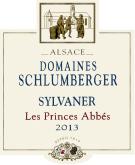History
The Sylvaner grape variety first appeared in Lower Alsace towards the end of the 18th century, and came from Austria. It is the most widespread grape variety in Alsace, particularly in the Lower Rhine.
Location
Sylvaner mostly comes from the Bux plot but also from the grands crus Kessler plot.
Wine-making
Pneumatic pressing, stating racking. Fermentation in thermocontrolled stainless steel tuns. Bottled during the year of production.
Gastronomy
Ideal for starting the meal, with pickled herring in cream, smoked eel presskopf or goat cheeses from the Provence. To be served at a temperature of 12°C.
Learn more about food & wine pairingTasting
The colour is pale yellow with light green reflections, of average intensity. The disk is bright, limpid and transparent. The wine shows youth.
The nose is open, pleasant and intense. We perceive dominant complex, fruity aromas, with golden apple, pear and a fine vegetal touch. Airing enhances the previous aromas and reveals citrus flavours of lemon and tangerine along with a complex floral note. The nose leaves a beautiful impression of the maturity of grapes. The range of fragrances is very pleasant. The onset in the mouth is moderately rich, with a balanced alcohol support. The wine evolves in a medium with strict liveliness and a sparkling note. The range of flavours develops a dominant fruity note of citrus, lemon zest, spices, ginger in addition to a fine complex floral touch of vanilla. The finish has a good length, 6-7 caudalies, openly lively and vigorous.
The balance of this wine is fresh and pithy. The range of aromas has a beautiful profile. Beautiful mastery of the wine-making process.
Technical sheet by M. Pascal Leonetti
“Best Sommelier of France of 2006”















